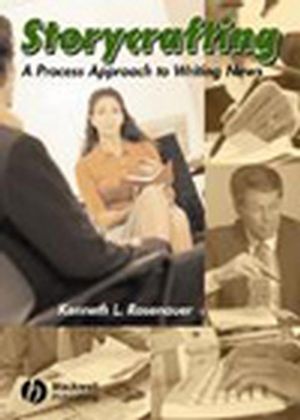Storycrafting: A Process Approach to Writing NewsISBN: 978-0-8138-0946-5
Paperback
August 2004, Wiley-Blackwell
 |
||||||
Storycrafting is based on the notion that all good
writing is, in a sense, good storytelling. The text makes liberal
use of writing examples from award-winning college and university
newspapers, allowing readers to see how their peers successfully
handled similar writing tasks. By focusing on the “how”
instead of the “what” of news writing
activity—the process rather than the
product—Storycrafting: A Process Approach to Writing
News shows student journalists how to proficiently craft
compelling and meaningful news stories.
In the first five chapters, Rosenauer establishes the foundation
for using the “process approach” to teach news writing.
This approach enables students to start writing sooner and to write
as they learn. Once the foundation is in place, closely related
aspects of process follow: ownership, audience, peer review, and
coaching. Beginning with chapter six, students discover additional
in-depth resources to hone their news writing knowledge and skills,
all presented through the filter of the process approach. The final
three chapters of the book focus on journalistic conduct, legal and
ethical issues, and current trends in journalism.
Each chapter includes numerous “For Practice” and “Crafting and Drafting” story-writing opportunities. The accompanying Instructor’s Resource Manual (available free on the Web) describes the theoretical underpinnings of process methodology and provides both new and experienced journalism educators the tools to make this book an effective and exciting component of the classroom experience



